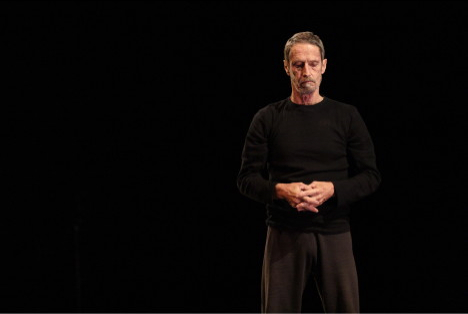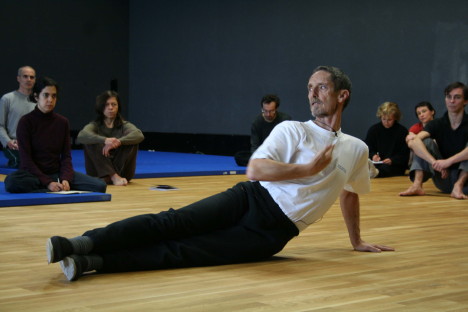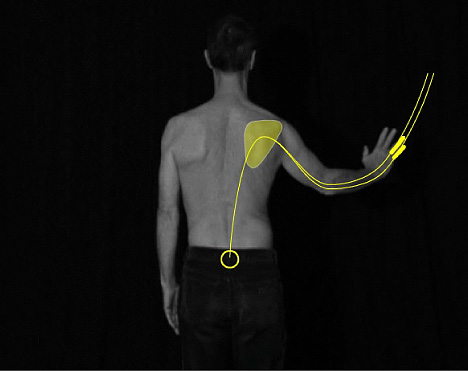STEVE PAXTON
PEOPLEText: Wakana Kawahito
Steve Paxton is an experimental dancer and choreographers who developed Contact Improvisation (C.I.). He is one of the main people in American post modern dance. At this time, his exhibition, workshops and talks have been held across Japan: Aomori, Tokyo, Yokohama, Kyoto and Yamaguchi. The main focus of this project is a workshop and exhibition called “Phantom Exhibition” at YCAM about the Material for the Spine, which he has been working since 1986. Steve Paxton has been integrating Aikido, Yoga, Vipassana meditation, and other Asian body techniques into dance. I visited his workshop in Yokohama to interview him.

Photo © Jordi Bover
Could you tell me how this project began?
It happened by accident. I was asked to make a DVD from a publisher in Brussels; we did the first shooting in Spain. At the end of the period we had a party. We showed images on the wall and it was great. It made such an interesting space – the way the images seemed to project the distance in the wall. So, I suggested to my friend to make an exhibition to show this quality of image. We have done it in Brussels, and have been to Tokyo, and will be in Madrid and Brazil. The reason why I came to Japan is Fujiko Nakaya…an artist invited me.

“Material for the Spine” Photo: Contredanse (Florence Corin and Baptiste Andrien)
The Material for the Spine is your new DVD and the theme for this workshop, what is “spine” for you?
It is very difficult to sense unless the spine is injured. I had an injury in my spine, and I could not move—it was really painful…I had to use a wheelchair at that time. Thus, something is core about the spine within humans. The English word spine means “column” in Spanish and it may be a better way to explain it.
Dance and most sports are focused outside of body, such as arms, legs and shoulders. On the other hand, the spine is the main focus for C.I. I started to create exercises for C.I. through analyzing how to use the spine in C.I. Using this exercise; I organized a workshop specifically for the spine.
I focus on the skeleton and how to support the weight. I am curious about the weight of many parts of the body and how it is all connected around spine.

“Material for the Spine” photo: Contredanse (Florence Corin and Baptiste Andrien)
For dance, muscle is normally the main concern, isn’t it? Why are you curious about the skeleton more than muscle?
Because so many people are already thinking of muscle. From my experience, there are some dance techniques of the spine, but that are not only of the spine. I cannot concentrate only on the spine for that because I need to be careful to be sure my step is correct and how I should move on the floor.
Thus, it is necessary to think of the spine deeply. If you study the spine once, you have never forget it. If someone would like to study the spine for long-term, yoga or Tai Chi is recommended. Material for the Spine is a good introduction.
Did you think of that since you were a child?
Nope. One day I started to dance and it was fun…I ended up being a dancer. Material for the Spine is about my dance idea I had in 1986.
Read more ...





